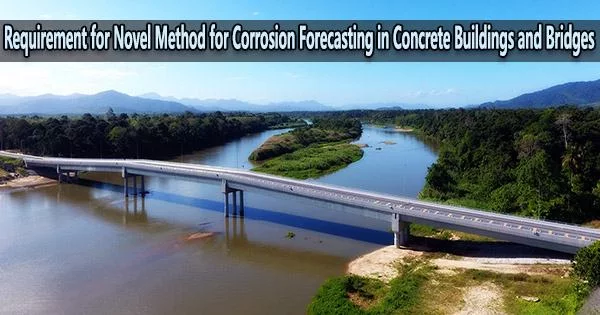Reinforced concrete structures are widely used in construction due to their strength, durability, and versatility. Reinforced concrete is a composite material composed of concrete and reinforcing steel bars, also known as rebars.
Chloride-induced corrosion of the steel embedded in reinforced concrete structures is the most frequent cause of deterioration and failures. This is a widespread, critical issue that has to be addressed right away and made widely known.
All currently utilized models to predict the corrosion performance of reinforced concrete structures exposed to chloride environments are based on the generally accepted theoretical idea of a chloride threshold.
In Applied Physics Reviews, from AIP Publishing, researchers from Switzerland, the United States, Canada, and Norway advocate for a paradigm change in the science of forecasting corrosion damage within reinforced concrete structures.
The multinational team of experts gathered just before the COVID-19 pandemic struck and reviewed the serious problems with the chloride threshold idea for predicting corrosion. In order to address the mounting issues of old structures losing functionality and perhaps collapsing, greenhouse gas emissions, and the general economy, they claim change is necessary.
Despite huge amounts of research, no clear chloride threshold could be found, and the influencing factors are complex. Unfortunately, mainstream research is still in search of this threshold, which presents a major barrier to developing reliable corrosion forecast models.
Burkan Isgor
“Corrosion of steel within concrete is a complex phenomenon,” said Ueli Angst, from ETH Zürich in Switzerland. “In the generally very high alkaline environment of concrete, where the pH may be higher than 13, steel is considered passive, which means it is covered by a thin layer of protective oxides and its corrosion rate is negligibly low.”
Yet, because concrete is porous, chloride ions can eventually pass through the concrete and reach the steel when exposed to salts like saltwater or road salts. The passive protective layer will eventually be lost, which could lead to corrosion. Corrosion may develop more quickly or more slowly, depending on the specific exposure circumstances.
In actuality, steel corrosion in concrete is a continuous process that is rarely divided into independent, logical stages. According to the researchers, from the time steel is embedded in concrete until it reaches the end of its service life, the emphasis should be on quantifying the time- and space-variant corrosion rate.
A multiscale, interdisciplinary strategy combining the theoretical and applied insights of materials science, corrosion science, cement/concrete research, and structural engineering is required to accomplish this. Angst and his colleagues propose scientific research evolve away from the chloride threshold concept.
“Despite huge amounts of research, no clear chloride threshold could be found, and the influencing factors are complex,” said Burkan Isgor, from Oregon State University. “Unfortunately, mainstream research is still in search of this threshold, which presents a major barrier to developing reliable corrosion forecast models.”





